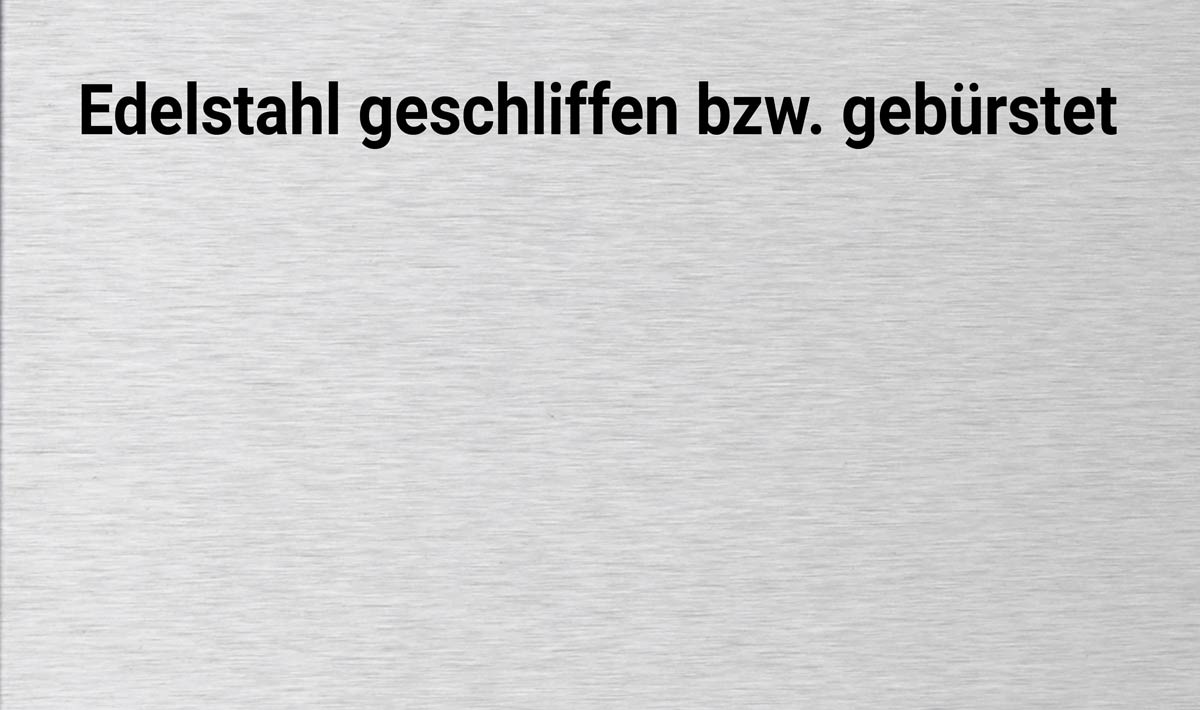Frequently asked questions
Here you will find some common questions and the appropriate explanations about our product range. If you have any further questions, please do not hesitate to contact us.
Material science
1.4301 is also known as X5CrNi18-10, AISI 304 or V2A steel. It accounts for around 1/3 of all stainless steels produced.
1.4301 is characterised by its good weldability with electrical processes. Even without heat treatment, the steel is corrosion-resistant due to its low carbon content. The carbon content must be below a percentage of 0.08, although in practice values below 0.05% are now possible. It also has very good polishability and can be flexibly shaped. It is approved for temperature stresses up to 600 °C. Especially in the polished state, its high-quality appearance is also protected.
X5CrNi18-10 is a relatively soft, nickel-containing, non-ferromagnetic austenitic steel. To keep the material rust-free and scale-resistant, 1.4301 contains a minimum of 13% chromium.
We use stainless steel 1.4301.
We now use 1.4301 stainless steel for most of our products. Compared to galvanised steel, this has the advantage of increased durability and sustainability. Our demand on a manufactured product is that it lasts a lifetime.
Powder coating is a tried and tested process for finishing our surfaces. In this process, electrostatically charged powder coatings are applied to the respective workpieces with the help of a spray gun. The parts then travel along a conveyor system into the oven for baking. At temperatures of around 180 degrees Celsius, the structures of the powder and the coated surface cross-link with each other. The heating process gives the powder a high-quality, smooth or evenly structured surface. Accordingly, we powder-coat metal parts such as steel, stainless steel, aluminium or other electrically conductive materials.
The advantages of powder coating include high corrosion protection and strong resilience. Coated parts are impact and scratch resistant as well as resistant to chemicals and weathering.
Powder coating is also suitable for use on aluminium and other electrically conductive materials.
Powder coating is a particularly environmentally friendly surface technology, because no solvents or thinners are used in powder coatings. In addition, the powder coating process conserves resources, because the paint that is wasted during application can be recovered.
Material 1.4016 is part of the stainless steel group and is also known as AISI 430 or X6Cr17.
This is called ferritic steel and has a maximum chromium content of 18% (minimum 16%). Ferritic Steel is strongly magnetic, in contrast to austenitic steel. The special property of stainless, ferritic chromium steel lies in its ferritic microstructure. This means that 1.4016 is resistant to stress corrosion, which is usually the neuralgic point in austenitic stainless steels. The shortcoming is the poor weldability of the material.
The material is characterised by its good bending, deep-drawing and polishing properties. The insensitivity to stress corrosion cracking and the basic resistance to alkaline solutions, moisture or diluted organic acids, for example, should also be emphasised. Corrosion resistance in saltwater environments is not given.
We now use stainless steel 1.4016 for most of our powder coated products, which do not require welding. Compared to galvanised steel, this has the advantage of increased durability and sustainability. Our demand on a manufactured product is that it lasts a lifetime.
We use both terms equivalent, therefore the grinding pattern of our products always corresponds to 240 grit. This number stands for the roughness of the abrasive. The surface is matt.

